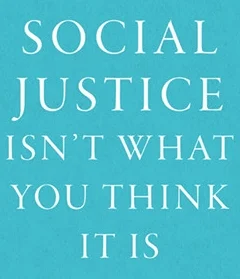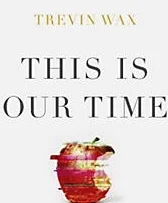At the same time, there are significant points where the movements that are calling for “justice” along different lines of gender, race, and identity seem to make their arguments on indefensible and sometimes self-contradictory grounds. Though they profess to be concerned about others wielding power,they seem to be altogether too prepared to swing their own billy clubs, often figuratively and sometimes literally, in the name of their preferred positions. This extra-judicial enforcement of their ideas and positions seems to undermine the nature of justice as it has been understood in most civilizations of which we have record.
Douglas Murray’s book, The Madness of Crowds: Gender, Race and Identity, takes a closer look at the various neo-Marxist movements to examine their foundations and abuses. Murray stands on what would be described the “conservative” side of many of these debates, since he indicates a belief in truth that should be pursued apart from one’s self-interest. At the same time, Murray is himself an openly gay atheist. This means that he certainly does not agree with many social conservatives on issues like the redefinition of marriage, the morality of same-sex erotic relationships, and the existence of God. This makes his critique of the various identity movements intriguing and, perhaps, more powerful.
Summary
As a gay man, Murray begins with a critique of the portion of that portion of the left’s culture war. While he is openly in support of recent inventions like the Obergefell decision that arbitrarily redefined marriage, he is careful to note that within the last decade, there were multiple gay-rights organizations, including the Stonewall organization, that opposed gay marriage. A big portion of his argument here is that, although he thinks the changes are largely good, it might be more reasonable to expect people who hold to millennia-old positions on sexual morality to take a while to come around to an affirmation of a newly invented concept.
In the second content chapter, Murray examines the current presentation of the feminist movement. His point in this chapter is that the movement is largely contradictory and puts everyone in a nearly impossible situation. There are obvious statistically significant differences between men and women in general, but to note those things publicly is, for some, a high crime. Attempts to undermine bias have created processes that necessarily bias organizations and culture in ways that tend to cut the feed from under those they are intended to help. In addition, the identity-oriented science arguments of feminism (e.g., there are no fundamental differences between men and women based on genetics) come into direct opposition with the theories favored by many in the various gay movements (e.g., there are fundamental differences between heterosexuals and homosexuals based on genetics), which creates issues. The issue becomes more epistemological than political at some point.
The third content chapter wrestles with the racial justice movement, which in its best aspects has led to awareness of systemic wrongs and worked to correct them. On the other hand, the same movement has also sought to make race (one of) the most important aspects of a human’s essence and thus made it more possible for systemic bias to continue or grow. In some cases, the result has been a new systemic bias against a different set of minorities, as has been evidenced by Harvard’s discrimination against Asians in admissions. This also puts people in weird spots, so that whites have to self-deprecate to speak against racism or be perceived as colonizers. The struggle in many cases seems to be more about power than truth.
The final content chapter discusses the transgender movement. Murray expresses sympathy with individuals who legitimately struggle with a sense of discomfort with their bodies and believe they would be more satisfied presenting as the opposite sex. At the same time, he notes that the movement for trans-rights has short-circuited the processes that might guard someone from making irreversible, life-altering decisions without considering that there might be another possible cause or solution. He discusses multiple examples where people who express minimal discomfort with their sex are quickly stepped down the road toward chemical and surgical transition, without a thorough vetting. Again, there are epistemological questions about the nature of truth and whether even asking questions (“Is your feeling true and lasting?”) is perceived as harmful.
Between each of these chapters is an interlude that explores some of the underlying causes and further consequences of this rapid epistemological shift. Murray discusses the Marxist foundations of the movement, which serves to continually enhance human discomfort by undermining power structures. He notes the impact of tech, with rapid communication, the inability to have a private conversation, and the work of Google’s search manipulations to present an alternate reality. Finally, he includes a section on one of the worst aspects of these movements, which is that there is no place or possibility of forgiveness. Statements that were uncontroversial a decade ago can now be used to destroy people who are deemed undesirable. Context matters little, as long as the right things are opposed violently and openly.
Analysis and Conclusion
Murray’s book is helpful in many ways. He points to the unsustainability of much of what passes for the social justice movement. The quest for destruction of power necessarily creates an oppressive power that will likely be as bad or worse a master.
The danger of Murray’s book is that his examples of gross abuses of various identity movements to pursue hatred and destruction of the innocent may lead some to believe that we need only resist those movements. That is most likely to occur among those who don’t actually read the book, or do so only cursorily. Murray takes concerns for the persecution of gay and trans individuals seriously, but notes that the movements that claim to support them are destroying the possibility of their being accepted or the society that will be able to accept them. In attempting to shift the Overton window, these groups may rip the house off its foundations, leaving us all cold and miserable in the winter storms.
The value of this book is that it looks beyond the gross abuses of violence and power by the various identity movements to interrogate the intellectual basis and question the logical conclusions. The result is an exposé that is illuminating, even if readers do not agree with all of Murray’s conclusions. There are a few points where Murray seems to drift a bit into outrage porn, but on the whole, he takes a fairly balanced view and calmly makes his arguments. This book, of course, is likely to be panned as violent oppression by many within the various justice movements simply because it questions some of the foundations and outcomes of their movement. However, it would benefit many on the left and the right to read the book and consider their own positions.



























There’s no reason to doubt that Jesus was nailed to the cross. Ultimately, I trust what Scripture says about Jesus’s crucifixion because I also trust what it says about his resurrection. And that’s what we should be celebrating this week.